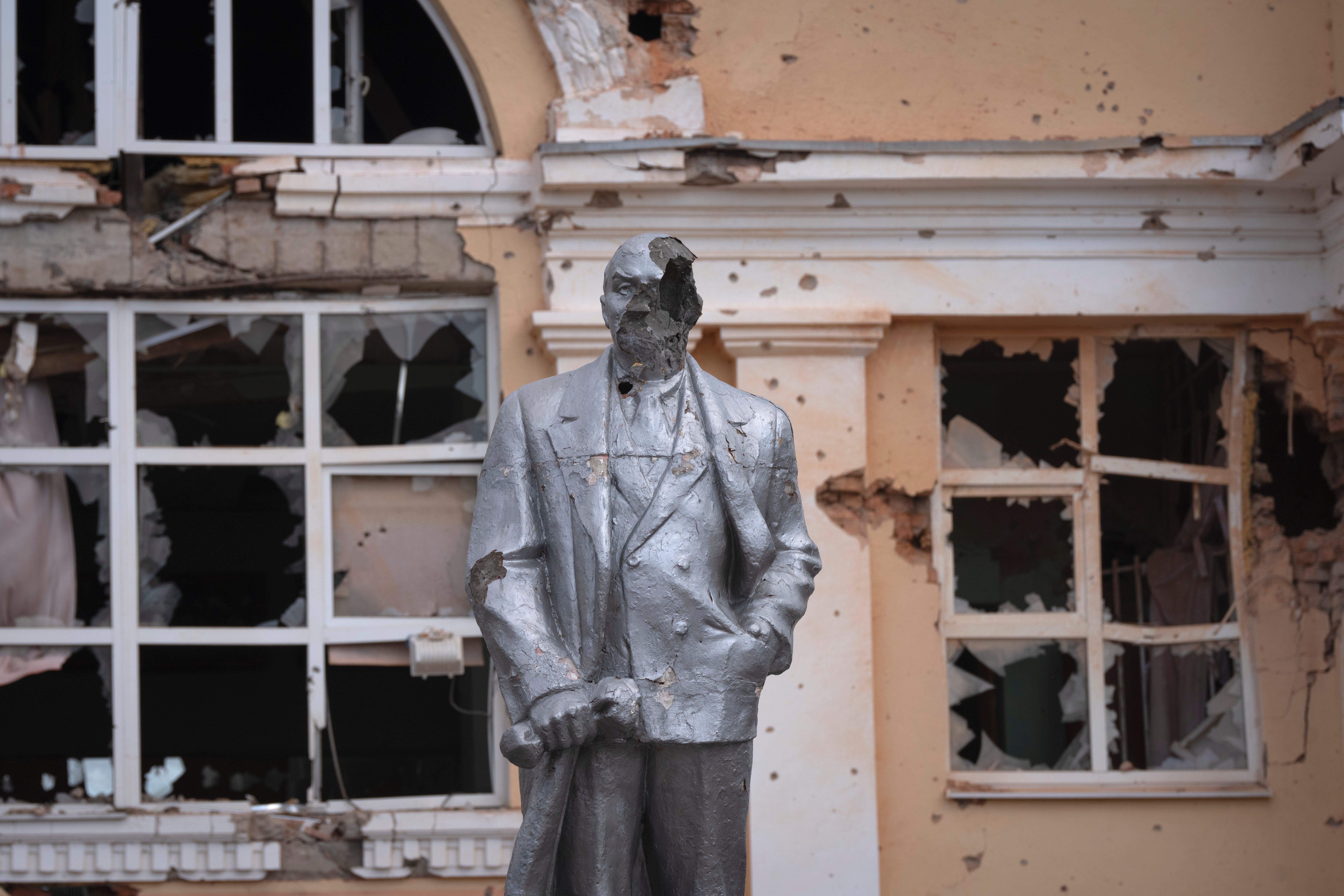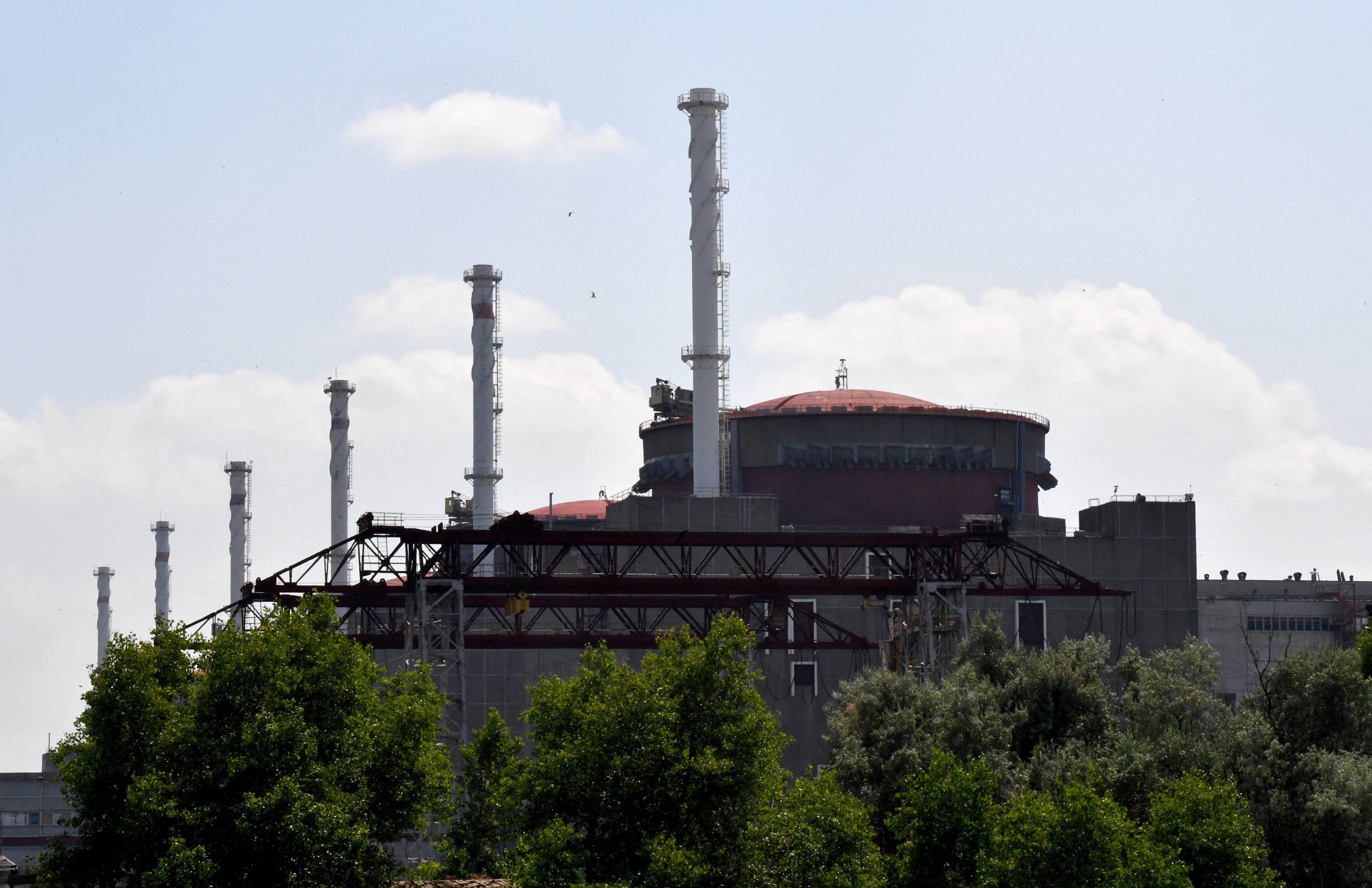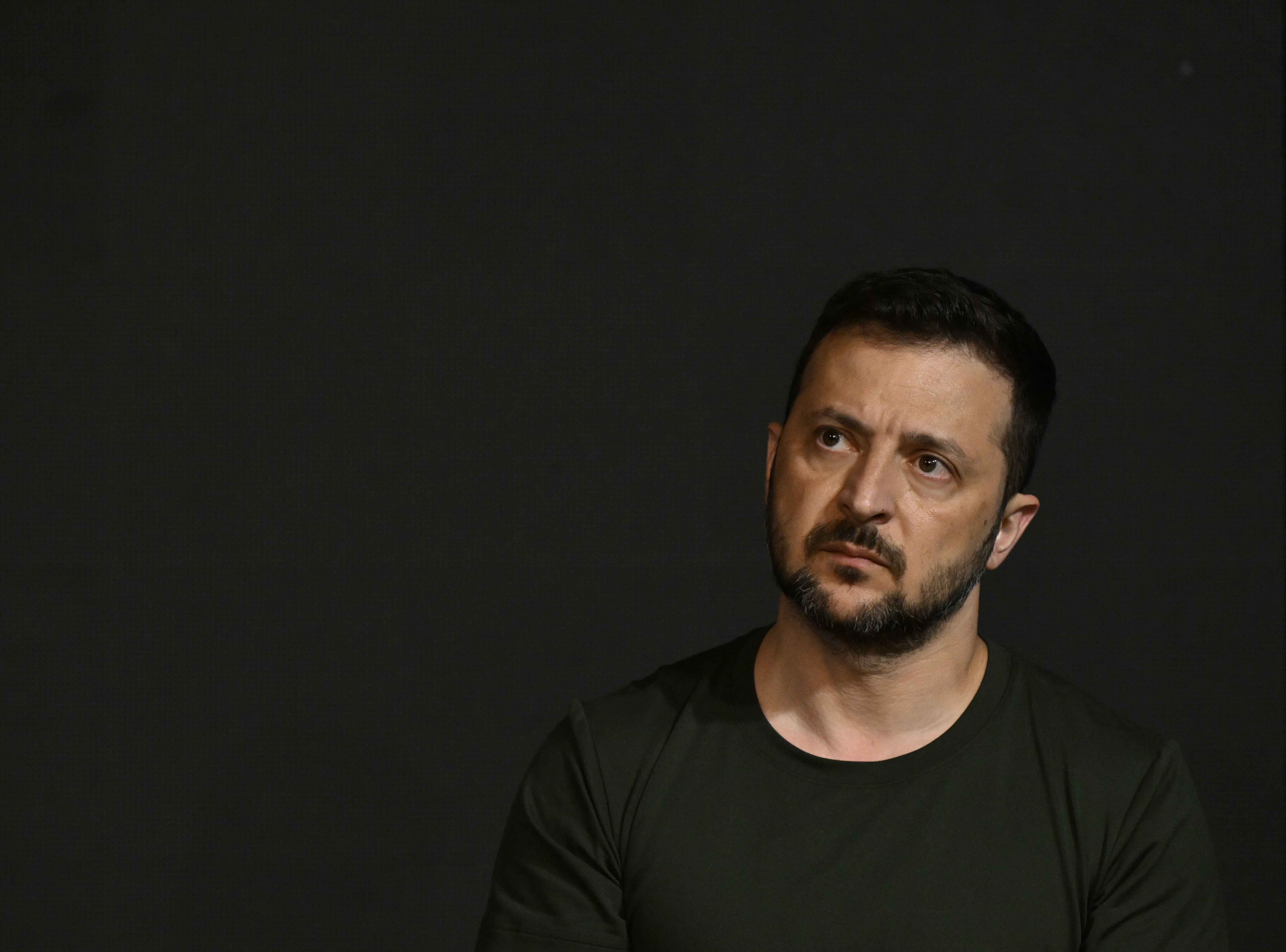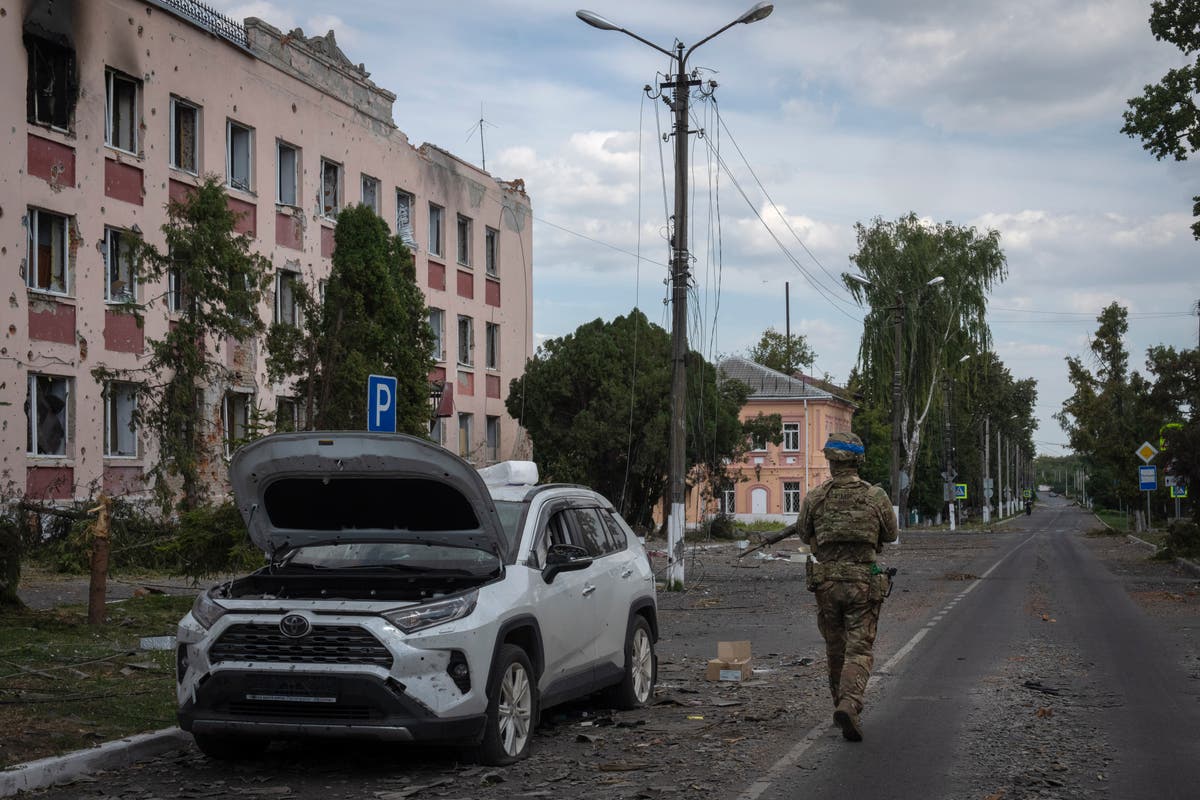Ukraine’s invading forces in the Russian region of Kursk have destroyed a key bridge and supply route for Moscow, as reporters described a “trail of destruction” left in the wake of Kyiv’s incursion.
Some 12 days into the largest invasion of Russia since the Second World War, Kyiv’s troops are strengthening their positions in the Kursk region, Ukraine’s president Volodymyr Zelensky said on Saturday.
Artillery fire has blown chunks out of a statue of Soviet founder Vladimir Lenin that stands in the town of Sudzha, which is now occupied by Ukrainian forces. Buildings were pockmarked with bullet holes and the streets, which were strewn with debris, were mainly empty as residents retreated to basements.

Journalists who entered the newly occupied Russian territory on Friday reported that Ukrainian troops have left a “trail of destruction” in their wake
Videos shared on social media showed the road bridge over the Seym river collapsing, cutting off part of the local district as Ukrainian troops seek to shore up their new foothold inside Russia. Russian military bloggers said the destruction of the bridge would complicate Russian ground lines of communication.

On Saturday evening, the head of the UN’s nuclear watchdog issued a warning over what he described as yet another “escalation of the nuclear safety and security dangers” at the Zaporizhzhia nuclear power plant, which was seized by Russia in the first days of its full-scale invasion.
International Atomic Energy Agency (IAEA) chief Rafael Grossi expressed his alarm hours after a drone struck the road around the perimeter of Europe’s largest nuclear plant, which has been shut down by Russian troops but needs external power to keep its nuclear material cool and prevent a meltdown.
The drone hit the road between the two main gates of the plant, landing close to the essential cooling water sprinkler ponds and about 100 metres from the Dniprovska power line, the only remaining 750 kilovolt line providing a power supply to the plant, the IAEA said.
And Ukraine was forced to reject Russian claims – reportedly submitted to the IAEA – that Kyiv is planning to attack a nuclear plant in Kursk and attempt to blame Moscow for the “provocation”. Ukraine’s foreign ministry said the claims were “insane” propaganda.

Kyiv reports having seized control of 82 settlements over an area covering some 444 square miles in Kursk since crossing into Russia on 6 August. Ukraine’s foreign ministry put the figure as exceeding what Russia has advanced in Ukraine this year.
Mr Zelensky said that the offensive had led to the capture of a number of Russian soldiers, who could be used in future for prisoner swaps. One Ukrainian colonel told The Independent this week that as many as 2,000 Russian soldiers had been taken captive, a figure that could not be independently verified.
Russia’s human rights commissioner, Tatiana Moskalkova, has initiated a conversation about prisoner of war exchanges, Ukrainian ombudsman Dmytro Lubinets was cited as saying by the US-based Institute for the Study of War think-tank.

Despite the Kursk incursion, Russia was continuing its push for military gains on Ukraine’s eastern frontline. Senior officials in the Donetsk city of Pokrovsk – a key military hub – had warned that Russia was “rapidly approaching” the area on Thursday.
Mr Zelensky said on Saturday that the situation near the towns of Pokrovsk and Toretsk was “under control”.
He said: “[There were] dozens of Russian assaults on our positions over the last day. But our soldiers and units are doing everything to destroy the occupier and repel the attacks.”
He reiterated his desire to ensure Ukraine’s long-range capabilities. There is currently a discussion happening among Ukraine’s Western allies over whether Kyiv should be allowed to use long-range missiles to attack Russia.
Northeastern Ukraine came under fire from Russian missiles. The city of Sumy was targeted, with two people injured in the strike which also damaged cars and nearby buildings.
Ukraine’s State Emergency Service said the hit involved an Iskander-K cruise missile and an aerial bomb.
After being the first Ukrainian official to publicly discuss Kyiv’s objectives in Kursk in comments to The Independent this week, Mr Zelensky’s senior adviser, Mykhailo Podolyak, said on Friday that it was clear to see how the operation “is objectively used to convince the Russian Federation to enter into a fair negotiation process”.
However, The Washington Post reported on Saturday that planned in-person discussions between Ukrainian and Russian officials over access to energy have been delayed by the Kursk offensive.
The discussions were reportedly scheduled to take place in Qatar. Ukrainian officials told the paper that the talks were delayed by the situation in the Middle East.

